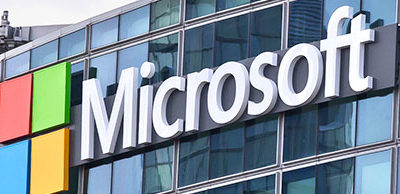%
Jubak’s Picks Performance 1997-2019
Jubak’s Picks
Buy and hold? Not really.
Short-term trading?
Not by a long shot.
So what is the stock-picking style of The Jubak’s Picks portfolio?
Click to expand...
Click to View the Jubak’s Picks Portfolio
I try to go with the market’s momentum when the trend is strong and the risk isn’t too high, and I go against the herd when the bulls have turned piggy and the bears have lost all perspective. What are the results of this moderately active — the holding period is 12 to 18 months — all-stock portfolio since inception in May 1997? A total return of 584% as of December 31, 2019. That compares to a total return on the S&P 500 stock index of 335% during the same period.
%
Top 50 Stocks Performance 2019
Top 50 Stocks
This long-term, buy-and-holdish portfolio was originally based on my 2008 book The Jubak Picks.
Trends that are strong enough, global enough, and long-lasting enough to surpass stock market averages.
Click to expand...
Click to view the Top 50 Stocks Portfolio
In The Jubak’s Picks Portfolio I identified ten trends that were strong enough, global enough, and long-lasting enough to give anyone who invested in them a good chance of beating the stock market averages.
To mark the publication of my new book on volatility, Juggling with Knives, and to bring the existing long-term picks portfolio into line with what I learned in writing that book and my best new ideas on how to invest for the long-term in a period of high volatility, I’m completely overhauling the existing Top 50 Picks portfolio.
You can buy Juggling with Knives at bit.ly/jugglingwithknives
%
Dividend Income Performance 2021
Dividend Income
Every income investor needs a healthy dose of dividend stocks.
Why bother?
Why not just concentrate on bonds or CDs?
Click to expand...
Click to view the Dividend Income Portfolio
Because all the different income-producing assets available to income investors have characteristics that make them suited to one market and not another. You need all of these types of assets if you’re going to generate maximum income with minimum risk as the market twists and turns.
For example: bonds are great when interest rates are falling. Buy early in that kind of market and you can just sit back and collect that initial high yield as well as the capital gains that are generated as the bonds appreciate in price with each drop in interest rates.
CDs, on the other hand, are a great way to lock in a yield with almost absolute safety when you’d like to avoid the risk of having to reinvest in an uncertain market or when interest rates are crashing.
Dividend stocks have one very special characteristic that sets them apart from bonds and CDs: companies raise dividends over time. Some companies raise them significantly from one quarter or year to the next. That makes a dividend-paying stock one of the best sources of income when interest rates start to rise.
Bonds will get killed in that environment because bond prices will fall so that yields on existing bonds keep pace with rising interest rates.
But because interest rates usually go up during periods when the economy is cooking, there’s a very good chance that the company you own will be seeing rising profits. And that it will raise its dividend payout to share some of that with shareholders.
With a dividend stock you’ve got a chance that the yield you’re collecting will keep up with rising market interest rates.
But wouldn’t ya know it?
Just when dividend investing is getting to be more important—becoming in my opinion the key stock market strategy for the current market environment—it’s also getting to be more difficult to execute with shifting tax rates and special dividends distorting the reported yield on many stocks.
I think there’s really only one real choice—investors have to pull up their socks and work even harder at their dividend investing strategy. That’s why I revamped the format of the Dividend Income portfolio that I’ve been running since October 2009. The changes aren’t to the basic strategy. That’s worked well, I think, and I’ll give you some numbers later on so you can judge for yourself. No, the changes are designed to do two things: First, to let you and me track the performance of the portfolio more comprehensively and more easily compare it to the performance turned in by other strategies, and second, to generate a bigger and more frequent roster of dividend picks so that readers, especially readers who suddenly have a need to put more money to work in a dividend strategy, have more dividend choices to work with.
Why is dividend investing so important in this environment? I’ve laid out the reasons elsewhere but let me recapitulate here. Volatility will create repeated opportunities to capture yields of 5%–the “new normal” and “paranormal” target rate of return–or more as stock prices fall in the latest panic. By using that 5% dividend yield as a target for buys (and sells) dividend investors will avoid the worst of buying high (yields won’t justify the buy) and selling low (yields will argue that this is a time to buy.) And unlike bond payouts, which are fixed by coupon, stock dividends can rise with time, giving investors some protection against inflation.
The challenge in dividend investing during this period is using dividend yield as a guide to buying and selling without becoming totally and exclusively focused on yield. What continues to matter most is total return. A 5% yield can get wiped out very easily by a relatively small drop in share price.
Going forward, I will continue to report on the cash thrown off by the portfolio—since I recognize that many investors are looking for ways to increase their current cash incomes. But I’m also going to report the total return on the portfolio—so you can compare this performance to other alternatives—and I’m going to assume that an investor will reinvest the cash from these dividend stocks back into other dividend stocks. That will give the portfolio—and investors who follow it—the advantage of compounding over time, one of the biggest strengths in any dividend income strategy.
What are some of the numbers on this portfolio? $29,477 in dividends received from October 2009 through December 31, 2013. On the original $100,000 investment in October 2009 that comes to a 29.5% payout on that initial investment over a period of 39 months. That’s a compound annual growth rate of 8.27%.
And since we care about total return, how about capital gains or losses from the portfolio? The total equity price value of the portfolio came to $119,958 on December 31, 2012. That’s a gain of $19,958 over 39 months on that initial $100,000 investment or a compound annual growth rate of 5.76%.
The total return on the portfolio for that period comes to $49,435 or a compound annual growth rate of 13.2%.
How does that compare to the total return on the Standard & Poor’s 500 Stock Index for that 39-month period? In that period $100,000 invested in the S&P 500 would have grown to $141,468 with price appreciation and dividends included.) That’s a total compounded annual rate of return of 11.26%.
That’s an annual 2 percentage point advantage to my Dividend Income portfolio. That’s significant, I’d argue, in the context of a low risk strategy.
Portfolio Related Posts
Adding PepsiCo to my Dividend Portfolio on payout increase and demonstrated pricing power
Last week PepsiCo (PEP) declared a quarterly dividend of $1.15 a share, up about 7% from $1.075 a share. That brings the dividend yield up to 2.7%, almost exactly Coca-Cola’s (KO) 2.72% yield. On the basis of that yield and the pricing power that the company demonstrated in first quarter earnings I’m adding the stock to my Dividend Portfolio. I think it’s a good pick for a period of high inflation and uncertain economic growth.
Please watch my new YouTube video: Trend of the week Give ‘Em the Cash
My one-hundredth-and-thirty-second YouTube video “Trend of the Week Give “Em the Cash” went up today. So far, so good this earnings season: oil and natural gas producers are holding the line on capital spending on new production, as they promised, and returning the huge increases in profits from the jump in oil and natural gas prices resulting from the Russian invasion of Ukraine and the sanctions slapped on Russian energy exports. And they’re returning those profits, as promised to shareholders as dividends. Big dividend payouts. Look at Pioneer Natural Resources (PXD), for example, which beat earnings for the first quarter and raised its dividend payout to what amounts to better than 11% annualized. I think we’ll see this trend continue for a while, especially as many CEOs stick to the path of putting fewer resources into new exploration and production because they can’t be sure how long the current level of prices will last.
Please watch my new YouTube video: Trend of the Week China’s back!
My one-hundredth-and-ninth-eighth YouTube video “Trend of the Week China’s back!” went up today.
At the end of last week, the Chinese government sent signals that it would make moves to stimulate the slowing economy amid widespread lockdowns, as well as letting up slightly in its crackdown on internet companies. This has sent Chinese tech stocks soaring, with multiple percentage-point increases in a few hours. In this video, I look at Tencent (TCEHY), JD.com (JD), Alibaba (BABA) and Meituan (MPNGF) and talk about why this is an important trend to follow, but why we’ll only see these stocks go up in the short term before government pressure sends them back down.
Natural gas prices soar–no summer slump in prices this year thanks to war in Ukraine
Normally at this time of year natural gas prices retreat and companies actually stash natural gas in storage for use durin hurricane outages in the fall and winter heating season. Not this year, however. Today natural gas prices in the U.S. hit a new 18-year high. At 11:20 a.m. New York time natural gas for June delivery climbed to $8.08 per million BTUs, up 8.12% on the morning
Please watch my new YouTube video: Lessons from Amazon
My one-hundredth-and-twenty-seventh YouTube video “Lessons from Amazon” went up today. In this video I’m looking at Amazon’s (AMZN) earnings report after hours on April 28. The company delivered its first quarterly loss in 7 years. The shares closed down 14.05% the next day. I think that the questions Amazon is facing are important across the economy as we emerge from a Pandemic. For example, looking at Pandemic sales trends do you invest in fulfillment and shipping infrastructure to maintain consumer expectations for quick delivery or do you hold back on spending on the likelihood that post-Pandemic trends will revert to lower pre-Pandemic patterns? Amazon’s decision to invest in building out fulfillment, and its flat sales numbers, led to this quarterly loss. Other companies such as Uber, DoorDash, Netflix, Peloton, and Starbucks face the same issues going forward.
Microsoft beats earnings estimates on cloud computing
On Tuesday, April 26, Microsoft (MSFT) reported net income of $16.73 billion or $2.22 share for the company’s fiscal third quarter. That was up from net income of $15.46 billion or $2.03 a share in the third quarter of fiscal 2021. Wall Street analysts had projected earnings of $2.19. The company reported revenue of $49.36 billion in the third quarter, compared with $41.7 billion a year earlier. Wall Street was looking for revenue of $49.05 billion. For the fiscal year that starts on July 1 Microsoft forecast double-digit revenue growth. The company’s shares closed up 4.81% on Wednesday, April 27. Microsoft is a member of my Jubak Picks Portfolio where it is up 179.25% from my initial buy on June 4, 2018. As of April 27 I’m raising my target price on Microsoft to $352 a share from the prior $155.
Visa’s earnings beat one more sign that post-Pandemic travel is back
After hours on Tuesday, April 26, Visa (V) reported earnings of $1.70 a share. That modestly beat analyst projections of $1.65 a share for the quarter. But it was a big jump from the $1.35 a share in the first quarter of 2021. Visa’s shares were up 6.47% on Wednesday. Visa is a member of my Jubak Picks Portfolio where it is up 239.26% since I added it to that list on November 15, 2015. As of April 28 I’m raising the target price on Visa in Jubak’s Picks to $266 from the prior target of $194. I will also add the stock to my long-term 50 Stocks Portfolio.
Microsoft beats earnings estimates on cloud computing
On Tuesday, April 26, Microsoft (MSFT) reported net income of $16.73 billion or $2.22 share for the company’s fiscal third quarter. That was up from net income of $15.46 billion or $2.03 a share in the third quarter of fiscal 2021. Wall Street analysts had projected earnings of $2.19. The company reported revenue of $49.36 billion in the third quarter, compared with $41.7 billion a year earlier. Wall Street was looking for revenue of $49.05 billion. For the fiscal year that starts on July 1 Microsoft forecast double-digit revenue growth. The company’s shares closed up 4.81% on Wednesday, April 27. Microsoft is a member of my Jubak Picks Portfolio where it is up 179.25% from my initial buy on June 4, 2018. As of April 27 I’m raising my target price on Microsoft to $352 a share from the prior $155.










